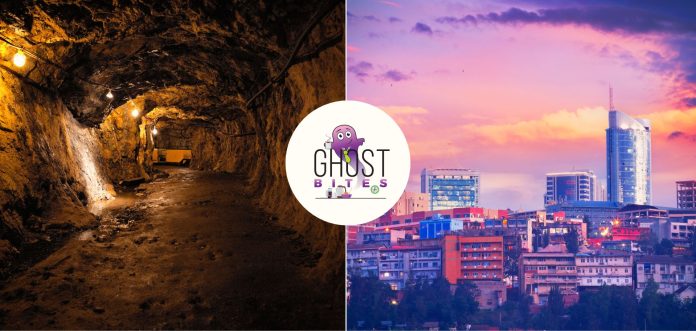Gold Fields had a strong start to the year (JSE: GFI)
And Ghana JV discussions with AngloGold (JSE: ANG) have been paused
Let’s start with the joint venture opportunity in Ghana. AngloGold and Gold Fields have been talking since 2023 about combining the neighbouring Iduapriem and Tarkwa gold mines and have been in discussions with government regarding the required approvals. But during that period, AngloGold had a change of heart – they have a different strategy for Iduapriem and will focus on running that mine in isolation.
Gold Fields refers to the opportunity as still being “compelling” – this leaves the door open for discussions to resume at some point in time. In the meantime, Gold Fields will look to apply to extend the Tarkwa leases which are due for renewal in 2027. They had some headaches getting the mining lease across the line at the Damang mine (also in Ghana), so hopefully that won’t be the case once more.
Onwards to the Gold Fields operational update for the first quarter of 2025, which reflects partially sustained momentum from the second half of 2024. Group attributable production was 19% higher year-on-year, but 14% lower quarter-on-quarter vs. a particularly high base (Q4’24). Naturally, if you dig into the underlying mines (pun shamelessly intended), the production results become more volatile. This is why the market prefers larger mining groups with multiple sites.
Better production leads to a lower cost per ounce, so it isn’t surprising to see that all-in sustaining cost (AISC) was 7% lower year-on-year. It also isn’t a surprise to see that it was 15% higher quarter-on-quarter, given the aforementioned production statistics.
Net debt reduced over the past three months from $2,086 million to $1,981 million. Net debt to adjusted EBITDA is at a perfectly acceptable 0.59x.
A solid quarter was important here, as this week also saw Gold Fields announced that they’ve convinced the Gold Road board to support the proposed A$3.7 billion acquisition of that group. They plan to fund it using new bridge financing. The hope here is obviously that gold prices remain strong, allowing them to reduce that debt.
2025 guidance is unchanged. This means that they still expect to spend roughly $1.5 billion on capex (give or take a few million) and over a third of that is expected to be on expansion capex rather than sustaining capex. These are good times in the gold sector.
Mantengu releases one of the strangest trading statements you’ll ever see (JSE: MTU)
It looks like EPS and HEPS had a fight and never want to talk to each other again
Mantengu Mining released a trading statement dealing with the year ended February 2025. Earnings per share (EPS) is up by 14,700% (from 1 cent to 148 cents), while headline earnings per share (HEPS) was actually a loss, down at -23 cents vs. 1 cents in the prior year. Talk about a fork in the road!
I had to have a chuckle at the SENS announcement referencing that Mantengu’s earnings are well in excess of the market cap and hence the significant discount to net asset value that the company is trading at isn’t justifiable. I hate to break it to the good people of Mantengu, but nobody cares about EPS. HEPS is what counts and considering they just made a loss, I would suggest making less noise about linking earnings to the share price.
It very rarely ends well for management teams who get frustrated at the market. Just focus on execution, particularly with the share price down 41% over 12 months.
Speaking of execution, production ramped up in 2024 and had a really strong end to the calendar year. Alas, January and February were quite sharply down year-on-year due to flooding. As luck would have it, this coincided with a 30% drop in chrome concentrate prices. Prices rebounded in March, so hopefully they can take advantage of that. The March and April production numbers certainly look good.
Remember the announcement of the acquisition of Sublime Technologies? The deal made absolutely no sense to me, as Sublime had a net asset value of R205 million and yet they bought it for $100k. The trading statement notes that the previous owners had started the process of winding the business down before Mantengu bought it, so that net asset value seems even stranger to me. I have a strong suspicion that the huge jump in EPS is because of a bargain purchase gain that will be recognised on this acquisition, as they bought the net assets at a deep discount.
Of course, whether or not they really got a discount will come out in the wash. Cash generation is what counts, not balance sheet values. This is why HEPS (which is at least a closer proxy for cash than EPS) is what the market looks at.
A potential deal for Metrofile draws closer (JSE: MFL)
A party is conducting due diligence
Metrofile released a cautionary announcement on 26 March that alerted the market to discussions with a potential acquirer of the company. Goodness knows this isn’t the first time that Metrofile has been thrown around as a takeover target.
Will it be different this time? The potential deal is at least still alive and well, with the mystery acquirer now moving into the high level limited due diligence phase. There is still absolutely no guarantee of an offer being made.
Since 25 March, just before the cautionary came out, the share price has increased by 60%. I obviously have no idea what premium has been discussed behind closed doors for this potential deal, but it seems like the market may be very guilty of counting its chickens before they hatch here. Even if there is an offer coming, how much higher could it possibly be than the current traded price?
MTN Rwanda also grew ahead of inflation – although there are pressures (JSE: MTN)
This can be added to the list of African subsidiaries that are in the green
MTN seems to be having a much better time of things at the moment. We’ve seen strong numbers in MTN Ghana and MTN Nigeria. We can now add MTN Rwanda to the list, albeit to a lesser extent.
The first thing I do is compare revenue growth to inflation, as some of these African countries have massive inflation rates. Rwanda isn’t one of them, with inflation of 5.3% in Q1. Service revenue up by 12.3% is thus a tick in the box, particularly as this was achieved despite a decrease in active data subscribers (a risk of an increasingly competitive market that shouldn’t be ignored).
The next thing to look at is EBITDA margin, which decreased by 120 basis points to 38.9%. That’s not great obviously, but EBITDA was still 9.3% higher and that represents real growth i.e. growth above inflation.
Capex fell by 22.5%, although this seems to be mainly due to the timing of capex spend in the prior year. We will need to see how this plays out over a full year. For now at least, adjusted free cash flow was up 70.1% and nobody is going to be upset about that!
Nibbles:
- Director dealings:
- The CFO of Growthpoint (JSE: GRT) sold shares worth R2 million.
- Renergen (JSE: REN) has achieved another milestone in the general de-risking of its investment story. The High Court in Gauteng has ruled that the Gas Act of 2001 does not apply to any liquefaction facilities outside the Piped Gas industry. Specifically, this means that Renergen’s activities fall under the Mineral and Petroleum Resources Development Act (MPRDA) and thus outside of the regulatory reach of the National Energy Regulator of South Africa (NERSA). Essentially, as long as Renergen stays away from supplying the regulated piped gas industry, there is no longer any ambiguity around the relevant regulatory regime.
- Shareholders of African Rainbow Capital Investments (JSE: ARC) voted strongly in favour of the delisting of the company. The focus is now on the offer itself, which is open for acceptance until 23 May. At this stage, having written so many times about the offer price and the management fees to get to this point, I’m just happy to see it go.
- Assura (JSE: AHR) is under offer from Sana Bidco, which is a special purpose vehicle created by KKR and Stonepeak Partners for this deal. The proposed structure is a scheme of arrangement, which means that a circular needs to be sent out to shareholders. The challenge is that there’s been a delay to getting the circular approved by the JSE, so Assura had to approach the takeover authorities for an extension of the deadline for posting the scheme circular. It has been pushed out to 21 May.
- Telemasters (JSE: TLM) has renewed the cautionary announcement related to a potential acquisition. They are in the process of identifying funding partners, so it sounds like they are getting close to making a detailed announcement. But as always, there’s no guarantee at all of a deal happening.





The only complaint with Mantengu’s SENS is why they didn’t explain the big difference between EPS and HEPS. They’ve referenced the valuation issue previously.
But they’re about to make big money – 25,000 tons pm of chrome.
Could well make 35 cents for the year.
Undervalued and an easy takeover candidate.